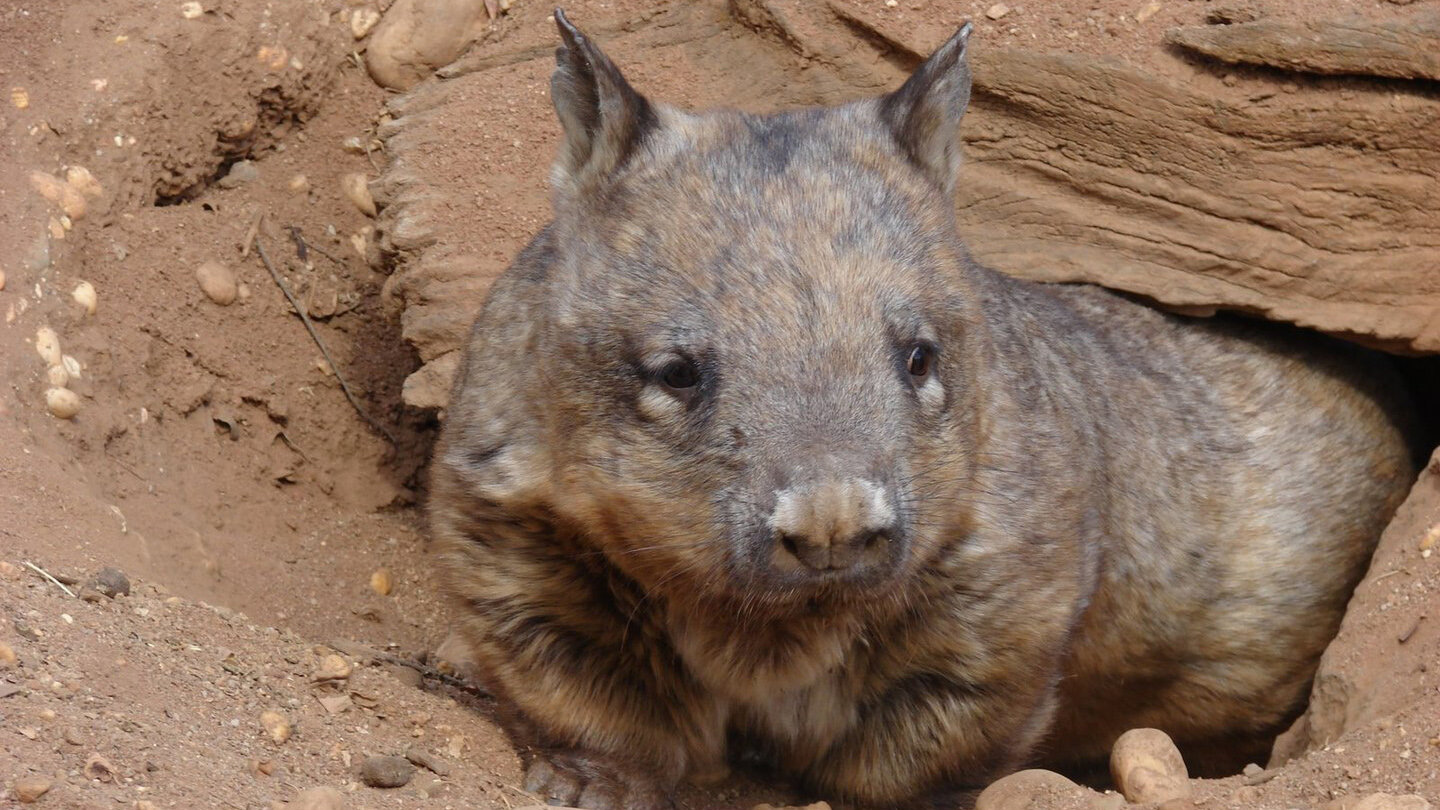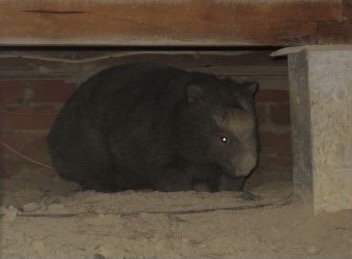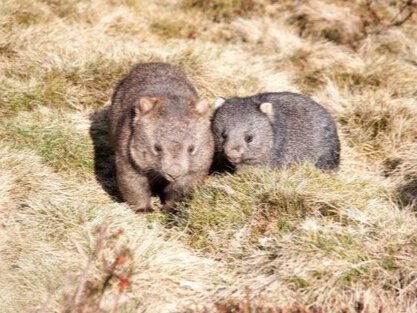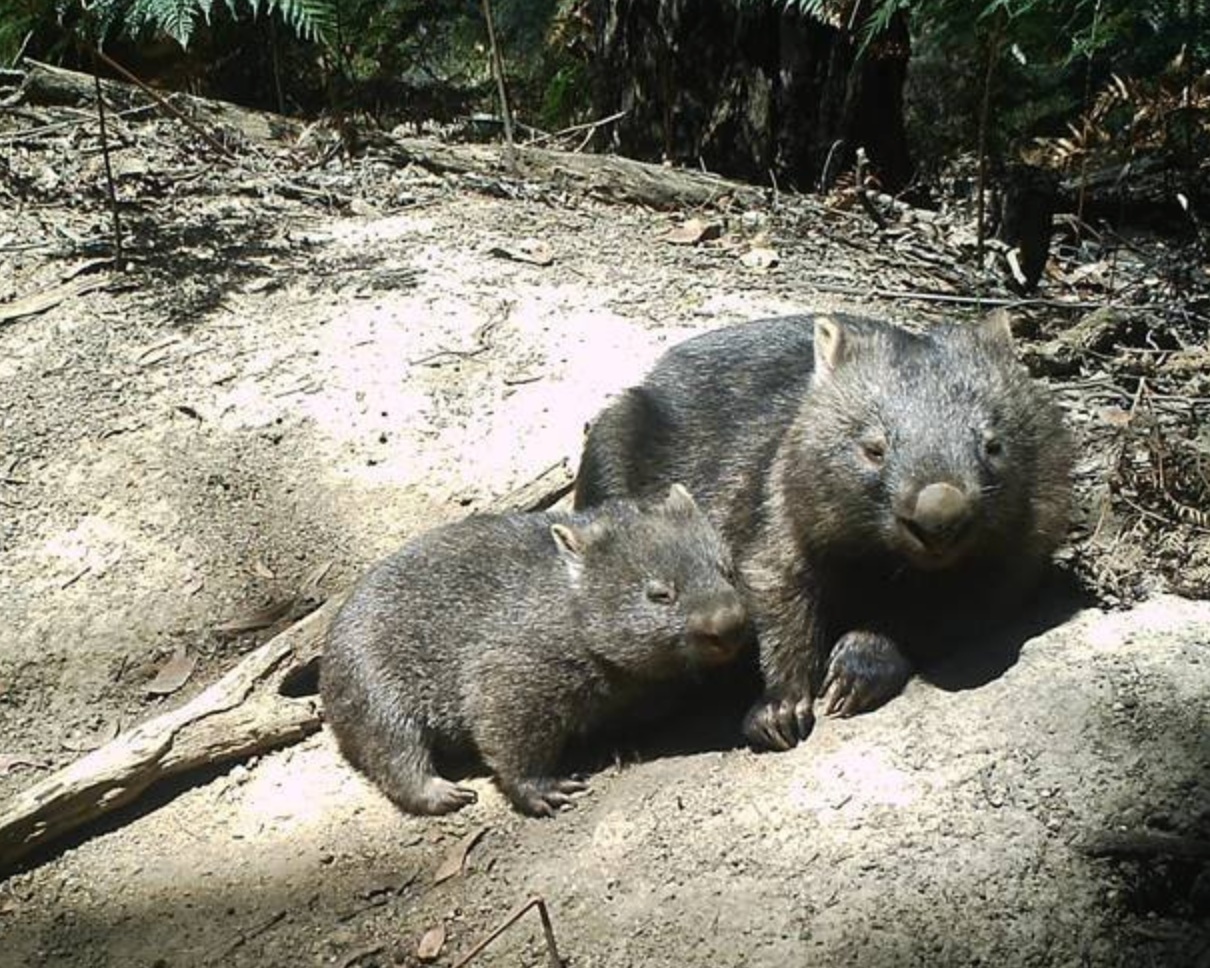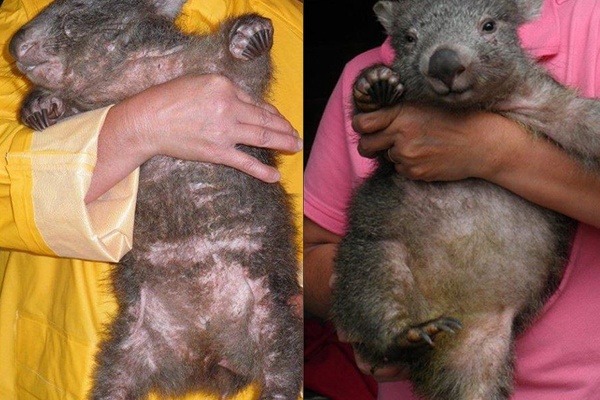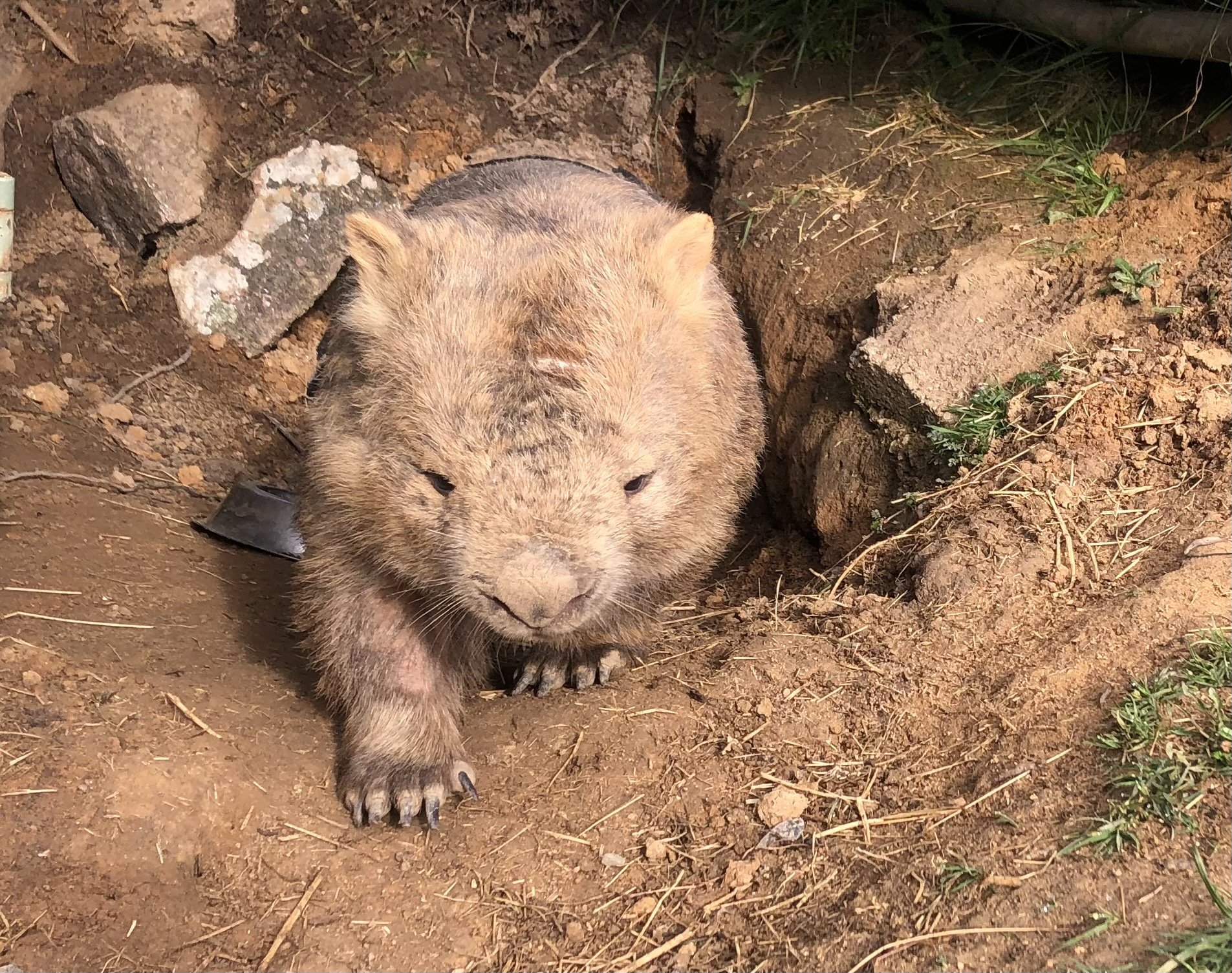Education
This section will give you some insight into what we do at WPSA. You can learn a bit about our furry friends and their habits, even get to know how they help in the environment. Have a dig around and see what you find!
Southern hairy nosed wombat. Image by Kalyob via Wikimedia Commons
Did you know a wombats digging provides a crucial role for Australian ecosystems by increasing nutrient cycling, creating avenues for water absorption and softening soils that would normally be impenetrable to plant seedlings. Digging mammals can also reduce the amount of combustible plant material on the ground, potentially altering fire regimes. We always knew wombats were clever!
WHAT TO DO IF YOU HAVE A WOMBAT UNDER YOUR HOUSE
There are several reasons a wombat may decide to take refuge under your house. It may seek short term refuge or decide to take residence.
If our furry friend is keeping you awake in the wee hours of the night or you’re concerned it may be causing damage, our helpful fact sheet will provide some guidance.
Image: ABC Australia Remastered: Wild Australians, Wombat Kingdom
Wombats, the eco-engineers
Wombats have long been considered important to the environment. Their digging cultivates hard soils and aids vegetation growth. Using never before seen footage and the latest science, ABC and Aaron Pedersen explore how these eco-engineers transform the land and help protect it from one of nature’s most devastating forces, fire.
A big thank you to the ABC for producing such an important and insightful documentary!
You can view the program, Wombat Kingdom, by clicking the link below.
wombat myths
Wombats breed every two to three years and only have one young at a time, yet many believe there is a population explosion of wombats. This simply isn’t true. We dispel this myth and others in our Wombat Myths article.
Dig this!
Wombats and other digging mammals help our environment in more ways than one. Discover how these little (or not so little) eco-engineers help us out.
Photo: ABC Open contributor Robbie Moonie
Wombats - the water diviner
Wombats are digging water wells and this is saving the lives of other animals.
A Great Video for Kids
Have a look at this video from the ABC and learn what makes a wombat a wombat!
A wombat rescue with a happy ending
Meet Mudsey, a young wombat who was rescued from certain death. Her mother was fatally injured with Mudsey stowed away in her pouch. A compassionate landowner saw Mudsey’s mother and wanting to help her, called the local wildlife organisation. Sadly Mudsey’s mother didn’t make it. However, this landowner’s simple action led to Mudsey’s rescue.
Mudsey has lots to live for and one wildlife carer provided this sweet little wombat with the best possible start.
The Wombat Whisperers
Check out this short film which is an insight into the work undertaken by wombat carers.
have you ever wondered what it is like inside a wombat burrow?
Now is your chance to find out. This rarely seen footage was taken by a couple of inquisitive and adventurous young brothers much to the surprise and shock of their parents. It is so well narrated you can see the fascination and interest the boys share for their local wombats and the need to find out more about the secret life of wombats.
5 facts to dig about digging
Did you know that when a wombat digs it can help prevent disease and pests in plants? Check out this short read and impress your friends at trivia with five digging facts!
Why have wombats been so persecuted over the years?
For so long wombats were considered vermin. Even today, many think of wombats as pests. We hope that some day we can change those perceptions.
One refuge’s work
Lyn Obern, Director at WPSA, runs a busy refuge in Kangaroo Valley, caring for and releasing orphaned wombats back into their native habitat. See the story on ABC’s 7:30 Report.
WPSA advocacy
We believe it’s important to continue to provide information to support valuable strategies, projects, policies and resources that protect the welfare of wombats. Below is a submission made to AAWS (Australian Animal Welfare Strategy). July 2024
Western Sydney Rewilding Project
Peter Ridgeway, Greater Sydney Local Land Services, explores the impact wildlife release can have to save animal life and the ecosystem.
Over four years, the effects of releasing rehabilitated bare nosed wombats was closely monitored and the results are overwhelmingly positive.
Allie, a very photogenic wombat.
2025 WPSA Bulletin
We endeavour to publish a quarterly bulletin detailing important issues such as mange management, the Society’s involvement in projects, research we support, as well as current news relating to the welfare of Australia’s beloved wombats.
You can download our most current bulletin here or obtain back issues by emailing us on: info@wombatprotection.org.au
BBC INTEREST IN FASCINATING BEHAVIOUR
https://www.discoverwildlife.com/animal-facts/mammals/wombat-foraging-in-the-ocean-tasmania
Rewilding projects are successful but more needs to be done
Although a wombat rewilding program is showing an increase in population numbers, other factors such as climate change, lack of food and road dangers are hindering movement.
Free wombat mask from Mother Natured.
Wombat Fun
Penny Whitehouse has a love for nature and connecting children with it. She shares lots of wonderful activities and information with children and we’re very interested in what she has to say about wombats. Learn about wombats, see which wombat books Penny reads and get a free wombat mask by visiting her website, Mother Natured.
Mange can kill
Mange is one of the biggest life risks to wombats. The good news is that is can be treated! You can learn more about treating mange in our Mange & Disease section of our website.
Conservation Volunteers Australia help with rewilding.
The Wisdom of Rewilding
A wombat rewilding program in is proving to have huge benefits for the environment and the survival wombats and other native wildlife.
australia’s eco-engineers
Did you know wombats are Australia’s Eco-engineers? Find out how their digging helps plants and other wildlife.

